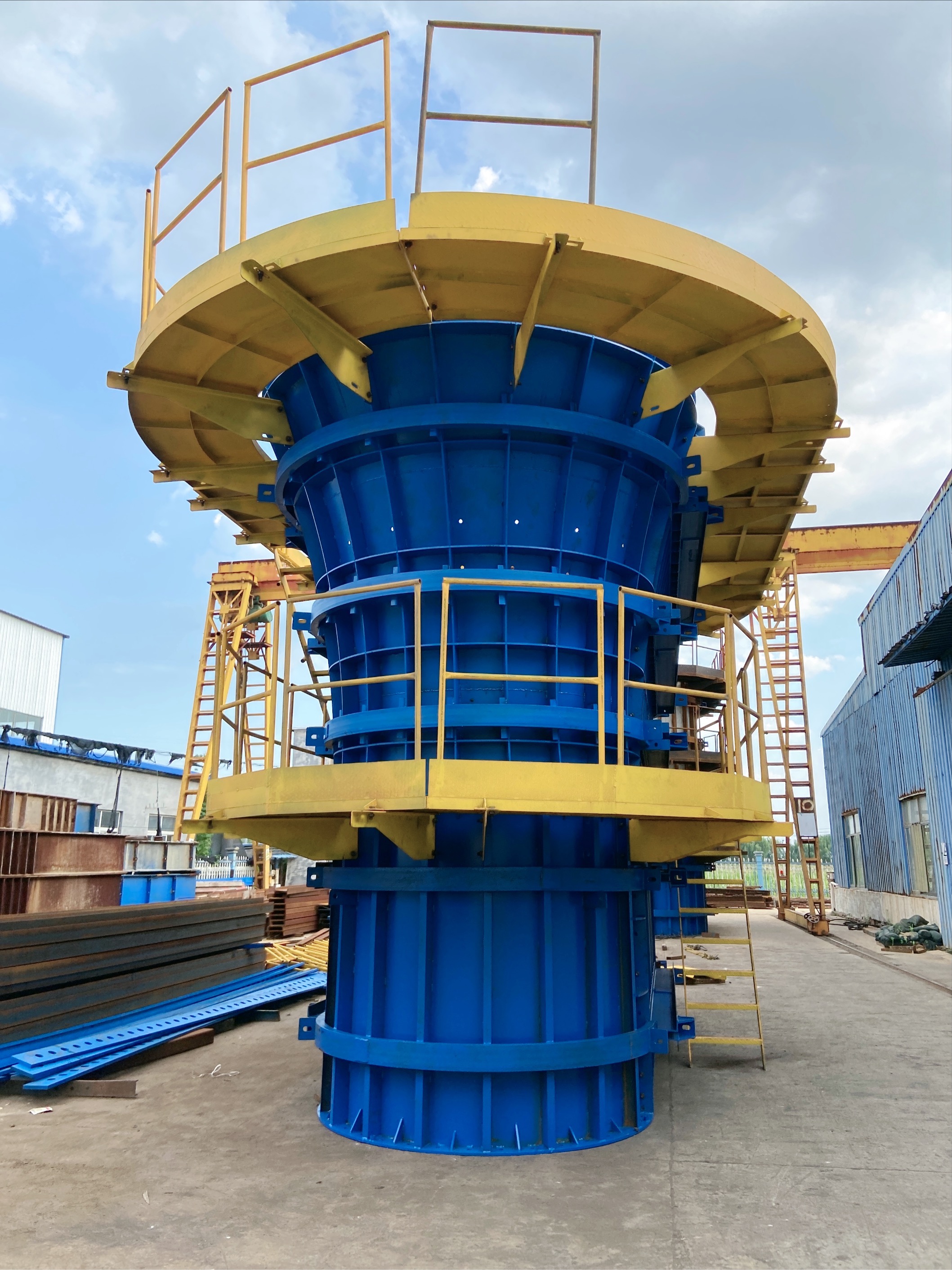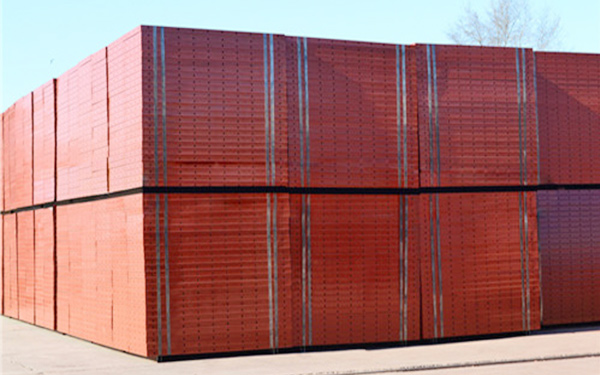Current position:
Home
News home
Industry News
Customized steel formwork manufacturers: How to avoid leakage of grout at the joints of the formwork?
Customized steel formwork manufacturers: How to avoid leakage of grout at the joints of the formwork?
source:Shandong Tianhong Heavy Industry Co., Ltd
Abstract:
Leakage of grout at template joints can reduce the quality of concrete structures, affecting their strength and durability
Leakage of grout in formwork joints can reduce the quality of concrete structures, affect structural strength and durability. The following are specific methods to avoid leakage of grout in formwork joints:
Template design and production
Optimize template design: minimize the number of joints and replace scattered small templates with integral steel templates. When designing, large-sized templates can be used to reduce the number of splices and thus lower the risk of grout leakage. At the same time, for the design of seams, better sealing methods such as tongue and groove splicing can be used.
Improve production accuracy: Ensure high precision in template production, smooth surface, and no obvious unevenness. When making, the size of the template should be accurate, and the joints should be smooth and flat, without any gaps, burrs, or missing corners, to ensure tight splicing.
Template installation aspect
Cleaning and repairing templates: Prior to installation, the joints of the templates should be pre treated. Thoroughly remove dust, oil stains, dirt, and other debris from the joints to ensure a clean surface of the template. At the same time, trim the template at the joint to make its edges smooth and even.
Use sealing materials: Use specialized sealing tape, rubber sealing strips, or sealing gaskets at the joints of the template to enhance the sealing of the joints. For areas where sealing strips or tapes cannot be used, sealant can be injected to fill the gaps between the templates.
Reasonable setting of tie rods and reinforcement: After positioning the template, the tightness of the tie rods around should be consistent to ensure that the template is installed firmly. When reinforcing, it is necessary to ensure that the formwork support system has sufficient strength and stability to withstand the lateral pressure during the concrete pouring process, and prevent formwork deformation from causing joint leakage.
Concrete pouring aspect
Control pouring speed and vibration: Control the pouring speed of concrete to ensure uniform flow of slurry and avoid situations where it is too fast or too slow. During the pouring process, appropriate vibration equipment should be used for vibration to fully fill the gaps between the formwork, but it is also necessary to avoid excessive vibration time or contact between the vibration rod and the formwork, which may cause deformation of the formwork or loosening of the joints.
Adjust the concrete mix ratio: moderately increase the powder content and improve the viscosity of the concrete without affecting the quality of the concrete; At the same time, control the water cement ratio well to avoid excessive dilution of concrete slurry caused by excessively high water cement ratio. An appropriate amount of flow agent can also be added to improve the flowability of concrete, which helps to fill the gaps in the formwork and reduce the occurrence of grout leakage.
Template maintenance and inspection aspects
Timely cleaning and repair: During the construction process, residual concrete and other impurities on the surface of the formwork should be promptly cleaned, especially at the joints, to prevent the residue from affecting the sealing of the formwork. Repair the damages generated during the construction process, such as using professional repair materials for minor damages, and replacing relevant components in a timely manner for severe damages.
Regular inspection and maintenance: After each shift of construction is completed, a comprehensive inspection of the formwork is carried out, with a focus on checking the sealing of the joints and the fastening of the connectors. Regularly maintain the template, including rust removal, repainting, reinforcement, etc., to ensure that the template is always in good working condition.
Template design and production
Optimize template design: minimize the number of joints and replace scattered small templates with integral steel templates. When designing, large-sized templates can be used to reduce the number of splices and thus lower the risk of grout leakage. At the same time, for the design of seams, better sealing methods such as tongue and groove splicing can be used.
Improve production accuracy: Ensure high precision in template production, smooth surface, and no obvious unevenness. When making, the size of the template should be accurate, and the joints should be smooth and flat, without any gaps, burrs, or missing corners, to ensure tight splicing.
Template installation aspect
Cleaning and repairing templates: Prior to installation, the joints of the templates should be pre treated. Thoroughly remove dust, oil stains, dirt, and other debris from the joints to ensure a clean surface of the template. At the same time, trim the template at the joint to make its edges smooth and even.
Use sealing materials: Use specialized sealing tape, rubber sealing strips, or sealing gaskets at the joints of the template to enhance the sealing of the joints. For areas where sealing strips or tapes cannot be used, sealant can be injected to fill the gaps between the templates.
Reasonable setting of tie rods and reinforcement: After positioning the template, the tightness of the tie rods around should be consistent to ensure that the template is installed firmly. When reinforcing, it is necessary to ensure that the formwork support system has sufficient strength and stability to withstand the lateral pressure during the concrete pouring process, and prevent formwork deformation from causing joint leakage.
Concrete pouring aspect
Control pouring speed and vibration: Control the pouring speed of concrete to ensure uniform flow of slurry and avoid situations where it is too fast or too slow. During the pouring process, appropriate vibration equipment should be used for vibration to fully fill the gaps between the formwork, but it is also necessary to avoid excessive vibration time or contact between the vibration rod and the formwork, which may cause deformation of the formwork or loosening of the joints.
Adjust the concrete mix ratio: moderately increase the powder content and improve the viscosity of the concrete without affecting the quality of the concrete; At the same time, control the water cement ratio well to avoid excessive dilution of concrete slurry caused by excessively high water cement ratio. An appropriate amount of flow agent can also be added to improve the flowability of concrete, which helps to fill the gaps in the formwork and reduce the occurrence of grout leakage.
Template maintenance and inspection aspects
Timely cleaning and repair: During the construction process, residual concrete and other impurities on the surface of the formwork should be promptly cleaned, especially at the joints, to prevent the residue from affecting the sealing of the formwork. Repair the damages generated during the construction process, such as using professional repair materials for minor damages, and replacing relevant components in a timely manner for severe damages.
Regular inspection and maintenance: After each shift of construction is completed, a comprehensive inspection of the formwork is carried out, with a focus on checking the sealing of the joints and the fastening of the connectors. Regularly maintain the template, including rust removal, repainting, reinforcement, etc., to ensure that the template is always in good working condition.
Disclaimer: The content provided on this website is for reference only (some information is sourced from the internet). The publication of content information is for the purpose of transmission and does not represent the views of this website. If the content involves copyright issues, please contact the website editor in a timely manner, and we will take appropriate measures to avoid unnecessary losses for both parties.
Related article
- Customization of steel formwork specifications: What are the installation steps for steel formwork? 双语对照 笔记
- Pulling out Mountains and Rivers for Win Win - Jining Tianli Employees Celebrate National Day Holiday with Tug of War Competition
- Steel template manufacturers supply for rent: How to deal with steel template size accuracy that is not up to standard? 双语对照 笔记
- Customization of steel formwork specifications: What are the installation steps for steel formwork?
- Pulling out Mountains and Rivers for Win Win - Jining Tianli Employees Celebrate National Day Holiday with Tug of War Competition
- Manufacturer of standardized steel formwork: How much impact does leakage of formwork joints have on structural safety?
- Nearby steel formwork manufacturers: What are the main functions of steel formwork?
- List of rental prices for steel formwork: Key points for acceptance of bridge formwork after delivery to the construction site
- Customization of Steel Template Specifications: What are the Common Types of Defects in Steel Templates?
- Bridge anti-collision guardrail steel formwork: What are the common methods for correcting steel formwork?
- Bridge steel formwork processing: How to control the deformation of steel formwork?
- Nearby steel formwork rental station: How to deal with and prevent honeycomb and pockmarks on steel formwork?
Hot article

- T梁模版
- Pulling out Mountains and Rivers for Win Win - Jining Tianli Employees Celebrate National Day Holiday with Tug of War Competition
- 力“拔”山兮,“河”作共赢——济宁天力员工欢度国庆假期之拔河比赛
- Pulling out Mountains and Rivers for Win Win - Jining Tianli Employees Celebrate National Day Holiday with Tug of War Competition
- Pulling out Mountains and Rivers for Win Win - Jining Tianli Employees Celebrate National Day Holiday with Tug of War Competition
- Pulling out Mountains and Rivers for Win Win - Jining Tianli Employees Celebrate National Day Holiday with Tug of War Competition
- Pulling out Mountains and Rivers for Win Win - Jining Tianli Employees Celebrate National Day Holiday with Tug of War Competition
Recommended article

Customized rental of construction steel formwork: How to prevent and deal with loose joints in steel formwork?

Customized rental of steel formwork: What are the dimensions, specifications, and models of steel formwork?
- Customized rental of construction steel formwork: How to prevent and deal with loose joints in steel formwork?
- Customized rental of steel formwork: What are the dimensions, specifications, and models of steel formwork?
- Steel formwork manufacturer supply specifications: What are the applicable fields for steel formwork
- 力“拔”山兮,“河”作共赢——济宁天力员工欢度国庆假期之拔河比赛
- Pulling out Mountains and Rivers for Win Win - Jining Tianli Employees Celebrate National Day Holiday with Tug of War Competition
- Pulling out Mountains and Rivers for Win Win - Jining Tianli Employees Celebrate National Day Holiday with Tug of War Competition
- Pulling out Mountains and Rivers for Win Win - Jining Tianli Employees Celebrate National Day Holiday with Tug of War Competition
- Pulling out Mountains and Rivers for Win Win - Jining Tianli Employees Celebrate National Day Holiday with Tug of War Competition



